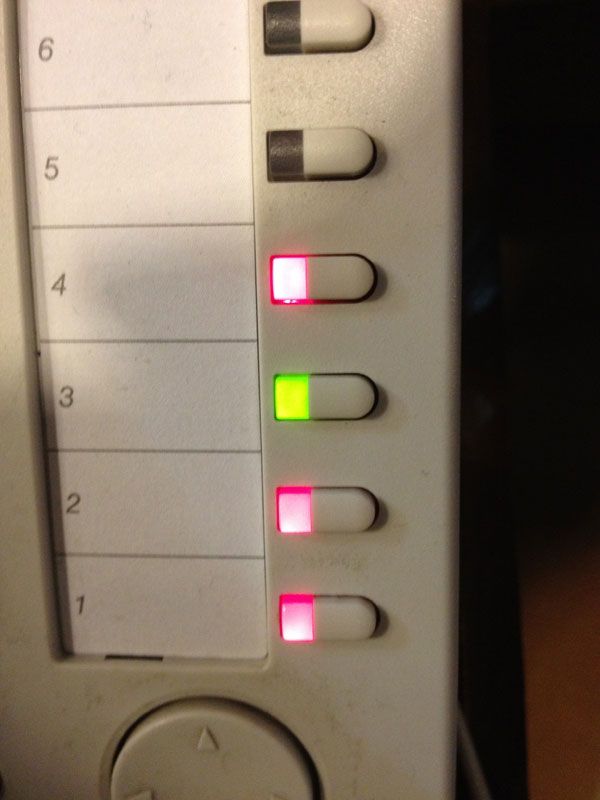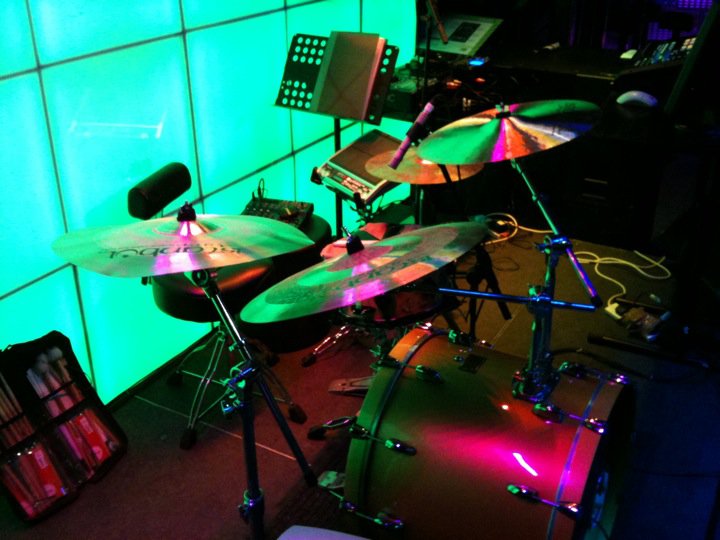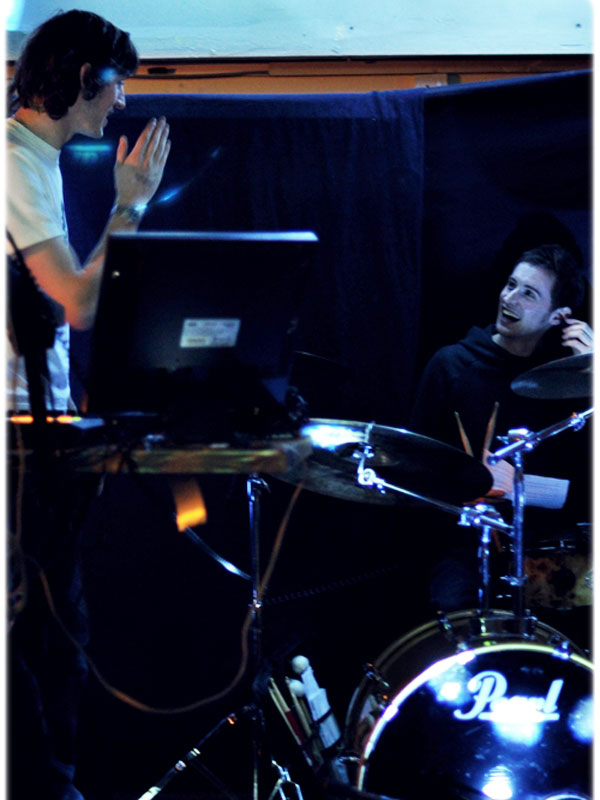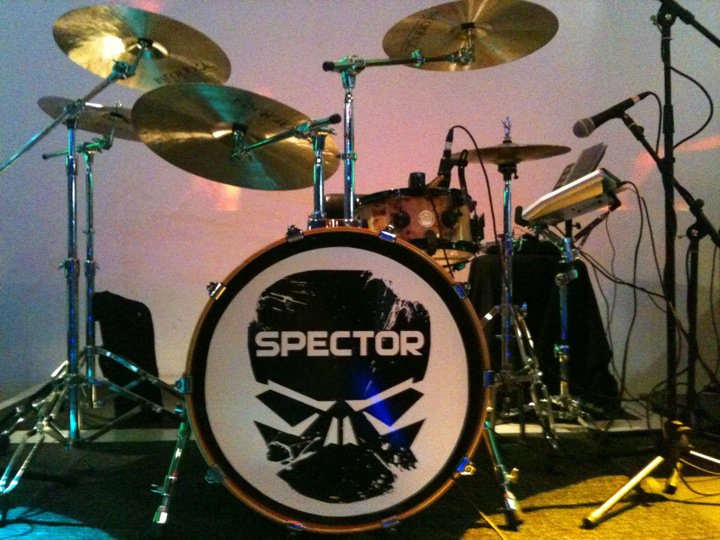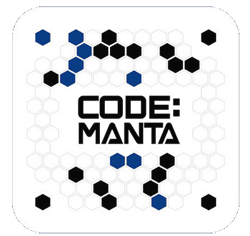Drummers vs Producers
Happy New Year!!!!! I hope you all had a great festive season, filling up on mince pies from DSUK, receiving loads of drum equipment via the big man courtesy of Drum Shop UK, and seeing the new year come round in true rock and roll style!!
It’s been a busy time for the guys at the drum shop, true Santa’s little helpers before Christmas, and then as saints with the new 'Sale Club’, amazing deals, the phones were ring of the hook, you gotta be quick with this! and please be patient, the guys are working non stop trying to get orders out the door on time, Wez nearly passed out, but 10 minutes under the mistletoe with Andy thing were looking up!
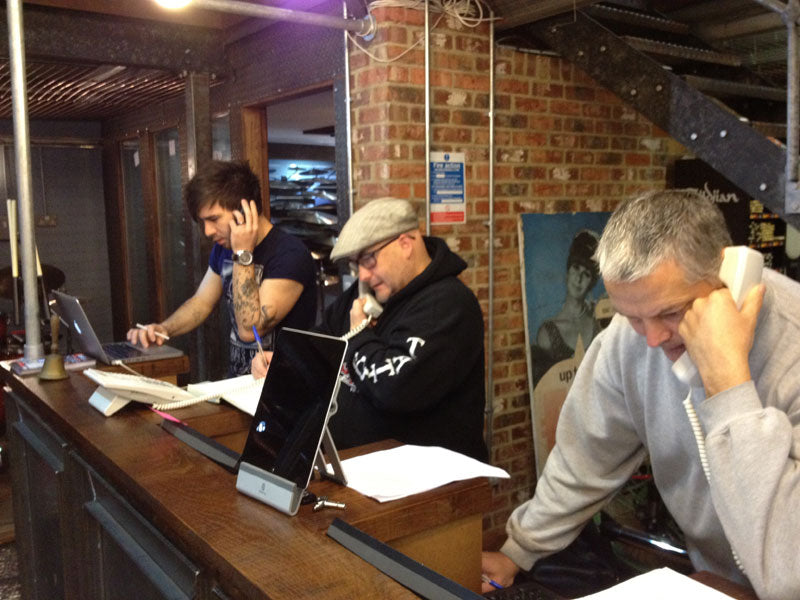
I’ve also had a busy time with gigs and the panto, it finally finished on Saturday woo!! I have had a real blast doing it although after 6 weeks of the same show most twice a day I’m ready for a change, although I had a few Percussion gigs in there too, to keep me sane! This week I’m straight back into rehearsals with both The Danny Allan Band & RJ Thompson ready for up and coming gigs, no rest for the wicked!!
To start this years blogs off, I have decided to cover a request from The Drum Shop’s very own Wez. He wanted to know my views on producers beats (electronic drum grooves etc..) and how they fair against a drummers beats. Having worked with a few great producers of electronic music I have seen many angles which producers take when creating a beat for a track, as well as their vision of how it will sound played by a live drummer. I thought the best place to start was speak to the great producer behind all the Spector/Code:Manta stuff I work on, John-Paul Denton, to get his thought process when he builds new beats.
Do you have any favourite beats/breaks which are reference points?
“The break from Stone Roses 'Fools Gold’ and 'Apache’ by The Incredible Bongo Band are typical examples of my favourite breaks and most of my compositions are variations on . If stripped back to just the kick, snare and one hat you can achieve a similar feel using certain swung and off timing techniques.”
“A big thing with these tracks is the use of compression to get a 'ducking’ and 'sucking’ effect, you need to achieve an a effect as if the snare drum is pulling you into it and the kick drum powers you away. This is something that appears quite alot albeit very subtly on live band recordings because of the heavy ways drums are compressed by rock/pop producers,dance music propducers like me have just ramped this up.”
It’s interesting to find out the thought process that John-Paul has regarding beats in this particular style. Of course he has time to spend manipulating these beats to fit and work with everything that is going on in the track around it, where as live drummers sometimes through being thrown in at the deep end have to respond to what is going on in the track there and then, and struggle to make it work as well as it could. I feel that from the process that John-Paul has mentioned it is something that many drummers don’t take into account and should do through their own practice time and can incorporate naturally into their playing, to keep the groove to a track solid as well as interesting, instead of just keeping a one bar pattern that never differs from start to end (I’m not saying that that doesn’t work, as ACDC have made this work for years), it would just make these awkward moments being dropped in it seem like a walk in the park, and give the perception of a well rehearsed band! Being aurally aware as a musician is so important to sounding great, being able to know what to put in, but more importantly knowing what to leave out.
When I play live for Spector or Code:Manta as mentioned in a previous blog, I use my Shine Select Custom acoustic drum kit with a Roland RT-10S snare drum trigger and a DDrum Acoustic Pro bass drum trigger along side the Roland SPDS Sample Pad to trigger the actual sounds that were used in the track. We decided to go down this route as we both wanted to use the exact sounds as well as had the live kit to the performance, and didn’t want to play over the top of a track. This enabled me to have freedom to mould parts with John-Paul live and have the electronic drums and acoustic drums tight and move together. I’m lucky that John-Paul has the respect for live musicians and wants to incorporate that into the live shows, and likewise I don’t want to disrupt the original feel of his tracks.
Check out some of John-Paul’s work Code:Manta due for release very soon, on his sound cloud page
Once again thanks for reading, next week won’t be a usual blog, I’m off to NAMM and will be posting up all the latest news from the show as its revealed in a few short blogs from the backend of the week.
Best wishes
It’s been a busy time for the guys at the drum shop, true Santa’s little helpers before Christmas, and then as saints with the new 'Sale Club’, amazing deals, the phones were ring of the hook, you gotta be quick with this! and please be patient, the guys are working non stop trying to get orders out the door on time, Wez nearly passed out, but 10 minutes under the mistletoe with Andy thing were looking up!

I’ve also had a busy time with gigs and the panto, it finally finished on Saturday woo!! I have had a real blast doing it although after 6 weeks of the same show most twice a day I’m ready for a change, although I had a few Percussion gigs in there too, to keep me sane! This week I’m straight back into rehearsals with both The Danny Allan Band & RJ Thompson ready for up and coming gigs, no rest for the wicked!!
To start this years blogs off, I have decided to cover a request from The Drum Shop’s very own Wez. He wanted to know my views on producers beats (electronic drum grooves etc..) and how they fair against a drummers beats. Having worked with a few great producers of electronic music I have seen many angles which producers take when creating a beat for a track, as well as their vision of how it will sound played by a live drummer. I thought the best place to start was speak to the great producer behind all the Spector/Code:Manta stuff I work on, John-Paul Denton, to get his thought process when he builds new beats.
Where do your initial thoughts when you built a beat for a track?
“A lot of things come into play when i start to build up the beat for my tracks, but in general if it’s for an orignial track like the 'Spector’ or 'Code:Manta’ stuff then i go with what has always made me dance myself. It’s a combination of things but swing is essential.”Do you have any favourite beats/breaks which are reference points?
“The break from Stone Roses 'Fools Gold’ and 'Apache’ by The Incredible Bongo Band are typical examples of my favourite breaks and most of my compositions are variations on . If stripped back to just the kick, snare and one hat you can achieve a similar feel using certain swung and off timing techniques.”Your beats can be quite erratic and nightmare for me to remember! ha ha, but they always work perfectly, how do you manage this!?
“ha ha thanks!! Yeah I always like to make my breaks interesting while keeping enough of a repetitive nature to form a solid backing. From triplet fills and skipped beats it becomes a battle of trying to surprise while not jump wildly out of time and break the flow of a track. for example I may come up with a 4 bar loop but then chop it into a 3 bar segment, then start the full 4 bar loop from the 4th bar, things like that with the fills added seem to keep it all cohesive. However, lately a lot of my tracks are a simple kick snare kick snare formation and the trick in making these sort of tracks come alive is in the use of the hats that surround then and the level of production on the snare drum/clap.”
Apart from the original samples from which your favourite loops you mentioned before were made, would you say you are influenced by live drums at all?
“A big thing with these tracks is the use of compression to get a 'ducking’ and 'sucking’ effect, you need to achieve an a effect as if the snare drum is pulling you into it and the kick drum powers you away. This is something that appears quite alot albeit very subtly on live band recordings because of the heavy ways drums are compressed by rock/pop producers,dance music propducers like me have just ramped this up.”
It’s interesting to find out the thought process that John-Paul has regarding beats in this particular style. Of course he has time to spend manipulating these beats to fit and work with everything that is going on in the track around it, where as live drummers sometimes through being thrown in at the deep end have to respond to what is going on in the track there and then, and struggle to make it work as well as it could. I feel that from the process that John-Paul has mentioned it is something that many drummers don’t take into account and should do through their own practice time and can incorporate naturally into their playing, to keep the groove to a track solid as well as interesting, instead of just keeping a one bar pattern that never differs from start to end (I’m not saying that that doesn’t work, as ACDC have made this work for years), it would just make these awkward moments being dropped in it seem like a walk in the park, and give the perception of a well rehearsed band! Being aurally aware as a musician is so important to sounding great, being able to know what to put in, but more importantly knowing what to leave out.
When I play live for Spector or Code:Manta as mentioned in a previous blog, I use my Shine Select Custom acoustic drum kit with a Roland RT-10S snare drum trigger and a DDrum Acoustic Pro bass drum trigger along side the Roland SPDS Sample Pad to trigger the actual sounds that were used in the track. We decided to go down this route as we both wanted to use the exact sounds as well as had the live kit to the performance, and didn’t want to play over the top of a track. This enabled me to have freedom to mould parts with John-Paul live and have the electronic drums and acoustic drums tight and move together. I’m lucky that John-Paul has the respect for live musicians and wants to incorporate that into the live shows, and likewise I don’t want to disrupt the original feel of his tracks.
Check out some of John-Paul’s work Code:Manta due for release very soon, on his sound cloud page
Once again thanks for reading, next week won’t be a usual blog, I’m off to NAMM and will be posting up all the latest news from the show as its revealed in a few short blogs from the backend of the week.
Best wishes
Carl
